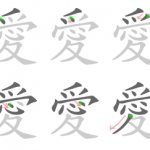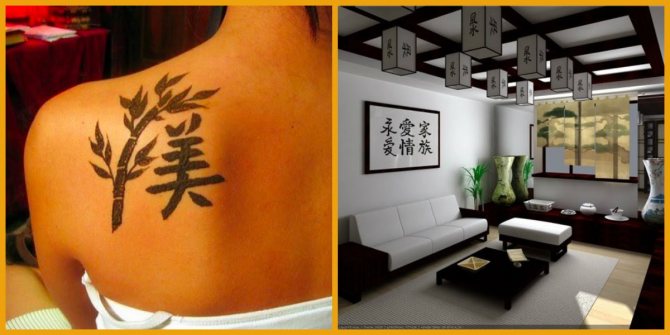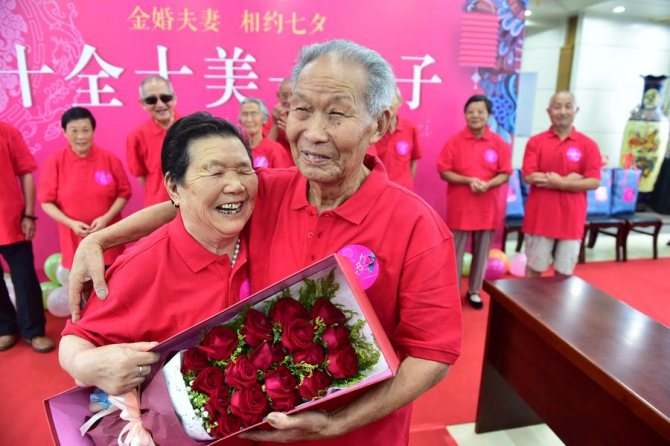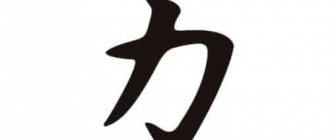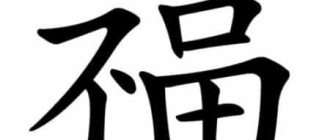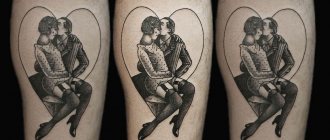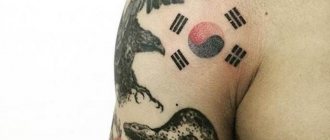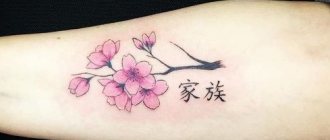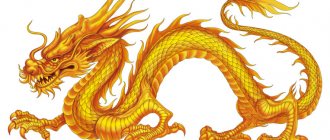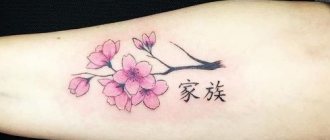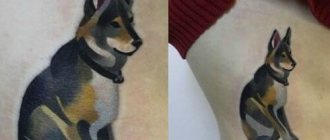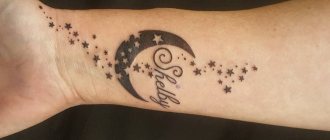Recently, tattoos have become very fashionable. The female sex rushed into tattoo parlors to do permanent makeup, to stuff tattoos. Now it is very possible to do tattoos in Latin, English, Chinese or Japanese. But most of all people like exactly the Chinese and Japanese characters. Ask why? The answer is very simple - they are unusual. After all, an entire word or sentence can be represented by one or two characters. It is worth noting that more people prefer hieroglyphs because they are mystical, unrecognized and not understandable to others.
There are many symbols, but the most popular characters are love, strength, family, good luck, peace and fire. When a person decides to put a symbolic sign on the body, he must necessarily know what it means and what the consequences of this sign are. I would like to describe the sign that inspires people to great deeds and great silliness - the symbol of love.
Chinese writing in practice
Each hieroglyphic sign consists of the so-called radicals, which have an independent meaning. Do those who have taken up the study of Chinese or Japanese need to memorize them all? Their number is counted in five digits, but in everyday use is used "quite a few" - thousands of five. For reading periodicals and popular literature, a knowledge of two thousand is enough. But the main thing is not cramming, but understanding the system by which the meaning of a word (and sometimes a whole sentence) can be guessed. For example, consider the hieroglyph "love," which means the most important concept in the life of every human being, regardless of language, race, or nationality. How do the Japanese and Chinese write (or rather draw) it?
What do claws and paws have to do with it?
Chinese handwriting does not seem simple, and to understand it, one must immerse oneself in a world of complex associative rules. To learn how to correctly draw the symbols calligraphically is a task for those who understand the way of thinking of the great and ancient people.
The hieroglyph "love" consists of four parts-radicals, arranged from top to bottom. The top drawing, reminiscent of the inverted Russian letter "Sh" written in bold strokes, with a wide base and a sloping last stick, symbolizes a claw or paw. Apparently, this is how the ancient Chinese understood the ruthlessness of feeling and its tenacity. We also say that love is not like a potato, and if you throw it out the window, it will come in the door. And Cupid's arrow is a sharp enough object. In general, it is easy to hurt the heart, and it's good if the feeling is mutual, or it will be painful.
The Chinese character for "happiness.
| Hieroglyph | Description | Application |
| Hieroglyph Happiness An amazing character that invokes the patronage of Heaven and the Gods. However, you can choose your luck namely in the area you want to be successful. Which, on the other hand, is very convenient. | Think about where you need to attract happiness and place the written hieroglyph in the desired area. For example, to the south-east (if you want to draw more wealth from the bountiful ocean of the universe) | |
| Double Happiness Hieroglyph. A powerful talisman that grants wishes. You can use this talisman to bring happiness to someone in tandem with you because its influence will be stronger when two or more people are together. | It will help to conceive a child if you put it under a matrimonial bed. Will give success in business (and at work) if you place it in the north. Will attract to you like-minded people and friends (help) in the northwest. You can even put it in your wallet to attract more friends-denominations to you. |
Roof
Next comes the roof. What it has to do with love attraction may be unclear to a European. But the housing issue, which has badly spoiled, as one Bulgakov character put it, the Muscovites, has apparently damaged the Chinese people back in the days when their writing was being formed. It is possible, of course, to understand this radical not so literally, but figuratively. Second in order, or perhaps even in meaning, the line that makes up the Chinese character for "love" most likely denotes a connection to the place where feeling has taken up residence. Namely in the heart.
How does it read?
Once we understand the meaning and spelling of the character love, we can try to read it. It reads quite succinctly ai [ai], perhaps because of its components. You need to know some rules in order to interpret it correctly in different sentences. The Chinese language does not assume:
- Gen;
- cases;
- declensions;
- conjugations;
- numbers;
- verb tenses.
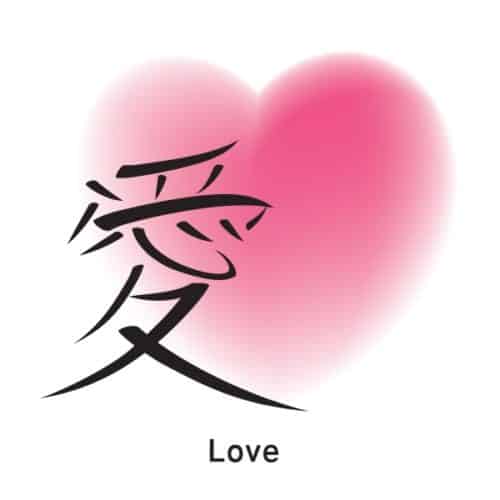
All words have a certain order in a sentence; they must not be rearranged, otherwise the expression would completely lose its meaning. This is due to the ancient origin of the language, it was formed in times when gestures were the main means of communication.
NOTE: To pass the exam in China, a foreigner needs to know about 3,000 characters.
The Heart
This organ in all nations is the home and receptacle of tender and, conversely, cruel emotions. Both love and hate live in it, grow and die. Why do people all over the world think so? Probably because a fast heartbeat is the most clearly perceived sign of excitement. And the symbol of this blood pump is indicated by two lines crossing at an angle.
Another similarly oblique cross, but with a short segment added to the top of the stick going from right to left and upwards, signifies something incomprehensible to a person who thinks in a European way. This radical symbolizes some slow-moving creature with many legs. But you can find logic in this figure, just think of the love languor, which deprives the strength. The dizziness of the head, the tangled feet...
In general, if we combine all four components, we get that the hieroglyph "love" contains the following information: "Under the roof of the heart, a feeling has settled, which has sunk its claws and has disturbed the peace so that we want to go somewhere, but we can't."
Japanese character for love
Like the Chinese character, the symbol can be used as a tattoo or to attract love, understanding and harmony in the home. It will help awaken and keep true feelings in the couple. The concept of "love" in Japanese is of two kinds: the first denotes not only feelings for the opposite sex, but also love, fascination with art, life, the beauties of nature - 愛. The second denotes love - romantic feelings for a particular person - 恋.
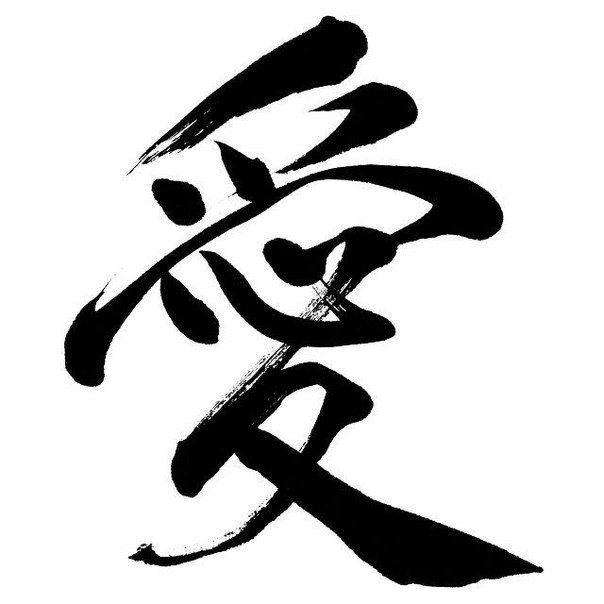

Description
If you use it in your life, it will help to strengthen the marriage and family relationships, smooth out conflicts. The sign will help to live decently with the other half, to acquire harmony and peace of mind. Increase the chances that all the positive feelings that arise between people become mutual.
In today's world, Japanese and Chinese characters that denote love can be used not only as tattoo marks, but also for images on postcards to convey your respect and best wishes to the person, to put on gifts, T-shirts. Often this sign is embroidered on clothing or bags.
Rules of writing
As in the case of the Chinese sign, it is important to study all the features of the sign and apply them in complete sequence. If making a sign for yourself or a loved one, it is better to turn to an expert of the language, who will explain and show the correctness of each feature. A prerequisite is to observe the correct sequence. It is also important to consult a specialist in order to find a sign that will accurately represent "love". After all, even one extra or incorrectly depicted line can completely change the meaning.


The original version of the character, which was created over 2,000 years ago, denoted only love and gratitude to the person who helped you or shared food. Then a heart symbol was added, and some time later a sign of a man who moved slowly, signifying that he had no desire to part with his loved ones. If the love is truly sincere or pure gratitude, an additional heart (not a hieroglyph, but as is customary among Europeans) could be depicted inside the sign.
What about the Japanese?
The signs of Japanese writing were borrowed from China. It happened in the fifth century A.D., and this explains the common ideographic features of the two neighboring peoples. If you look closely at the Japanese character for "love," you can distinguish in its radicals all the elements of its Chinese prototype: the roof, the claws, the heart, and even the slow gait, though not immediately. The writing of calligraphers from the Land of the Rising Sun is more soft and fluid. Speech also sounds different. While Chinese has no "P" at all, Japanese has the same for the "L" sound. The interpretation of radicals differs just as much as the phonetics.
An important part of the national character of the Japanese is that they voluntarily make commitments and follow them carefully. They will never say, like us, "I owe nothing to anyone. If one's homeland, family, parents or company think one should do something this way and not that way, one will do what one feels or what one wants and do what they want. And if a Japanese loves, it is eternal love. The character consists of many lines and dashes, deciphered by a whole set of feelings. There is energy, spiritual closeness, peace and union. In general, an almost perfect bond of Hymen with some national specificity. The spelling of a character can vary depending on the meaning given to it (koi or kanji).
History
The modern Chinese alphabet, has over 50,000 characters, the number of letters no other writing system can boast. They serve to convey meaning rather than phonetic meaning, and by studying them, one understands more about the culture of the country and its people. Some scholars believe that the Chinese script appeared 6 thousand years ago, but this hypothesis is not confirmed by facts.
Hieroglyphs consist of 24 lines and 316 graphemes, they have a long history and are still being modified. Ancient Chinese literati were not eager to simplify the alphabet. On the contrary, they made a cult out of it, ascribed magical powers and deified it. We can say that these pictures, shaped the Chinese people's perception of the world around them. Folk art, traditions, love relationships - were formed under the influence of the original writing and language.
IMPORTANT: In the 60s of the 20th century, the Celestial government simplified the hieroglyphs by reducing the number of features in order to increase literacy.
Hieroglyphic tattoos
Once upon a time sailors decorated their bodies with many blue images, reminiscent of distant countries, storms and storms. In prison there was also a tradition to make "nakolki", and not just like that, but with a certain meaning understood by the "sitizens" (and law enforcement officers - even reference books sealed "for official use" were printed). Ordinary men who were not burdened by prison experience and did not sail the seas also sometimes had inscriptions on their clothes, but with simpler meaning ("Sonya", "Masha", "I will not forget my mother," etc.).
In our time, which is characterized by a passion for Eastern philosophical concepts, everything has become much more sophisticated. Not immediately and not everyone can understand what this or that hieroglyphic tattoo means. "Love" is now tattooed in Japanese or Chinese, on different parts of the body, and not always, unfortunately, in the correct spelling. But one should remember that Eastern calligraphy is an art that masters have been studying for years, and any inaccuracy can result in the sign either acquiring the completely opposite meaning, or becoming a meaningless set of squiggles. Besides, the adherents of Buddhism, Shintoism and other overseas religious and philosophical doctrines believe in the fact that the body image can affect the destiny. So caution will never hurt.
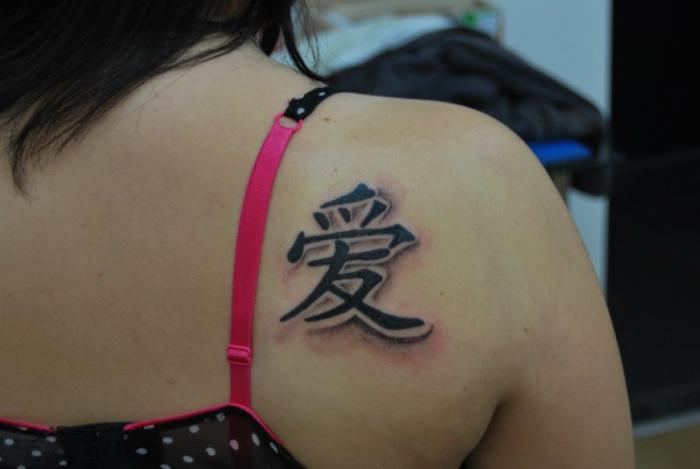

Is it possible without hieroglyphs?
It's very difficult to convey the phonetics of Japanese, Chinese or, for example, Vietnamese words using Russian. The meaning of an expression, from direct to opposite, depends on how the speaker "sings" the set of sounds. At the time of the great friendship between the USSR and the People's Republic of China there was an idea to translate the spelling of words in the Celestial Empire into Cyrillic alphabet, eliminating a huge number of characters, just as previously simplified Russian grammar, removing "yati", "yera" and other supposedly unnecessary letters. But this project, despite its obvious logic, did not take place. This explains why the character "love" adorns the pictures of Chinese and Japanese young people chosen to this day.
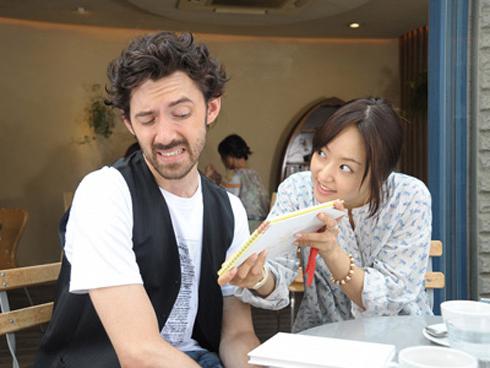

About names
It seems that it is very easy to write a Chinese or Japanese word in Russian. Anyone who services or sells radio equipment, cars or other equipment from the Land of the Rising Sun or the Celestial Empire does it. There are many brands: Mitsubishi (or is it Mitsubishi?), Subaru, Matsushita (again, maybe Matsushita?). And then there are the names (Emperor Hirohito, for example).
How much our accent corresponds to the original can be judged by the inimitable Japanese accent. If a girl's name is Lyuba, a Japanese will say "Ryuba" when addressing her. What if he's afraid of forgetting and needs to write down the name? Will he find the right character? Lyubov Petrovna, for example, may not understand that she is being addressed. But resourceful inhabitants of the Japanese islands find the right radicals, trying to convey all the richness of the Russian language. It turns out, though, with difficulty.
